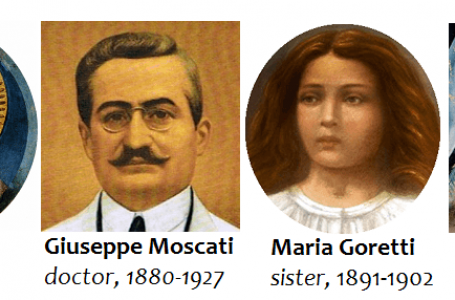"I Lived With Mother Teresa" – Mother Teresa Personality Traits
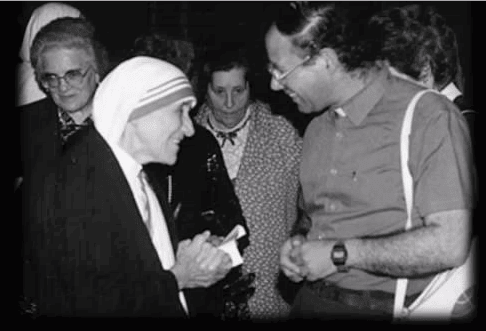
This article brings out Mother Teresa’s personality traits. This is an interview with Jesuit Fr Paul Chetcuti who lived with Mother Teresa for five months working in Mother Teresa’s homes run by the Missionaries of Charity and at the Sisters Mother House. Mother Teresa’s ministry arrived at a critical moment in Calcutta’s history, in the late 1940s, when its population was swelling with an influx of refugees from the fighting that had broken out between India and Pakistan upon the end of British rule.
1. What did Mother Teresa’s work consist of?
Personality/character trait: dedication to serve those in need
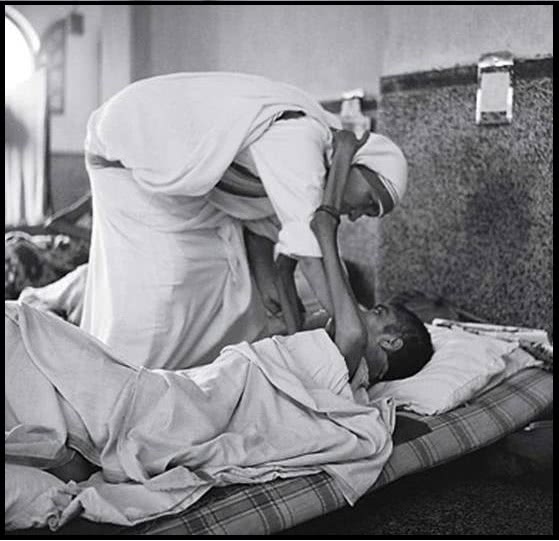 “Mother Teresa’s work consisted of caring for the dying, tending to the sick and the leprous, welcoming the homeless including pregnant mothers with infants and listening to people. These were some of the many ordinary things which Mother had done.
“Mother Teresa’s work consisted of caring for the dying, tending to the sick and the leprous, welcoming the homeless including pregnant mothers with infants and listening to people. These were some of the many ordinary things which Mother had done.
The reputation for holiness that accompanied Mother Teresa through her later life was very much a result of this ‘doing ordinary things with extraordinary love’. People sensed that her way of living transformed the most humble tasks into great acts of love toward God and towards one’s neighbour. Her holiness could be seen in the way she listened to people, the way she handled a sick child, the way she prayed, the way she received Communion. Everything radiated the presence of the Spirit of God in simplicity and humble expression. She made holiness reachable and attainable even to the weakest among us.”
2. What were Mother Teresa’s attitudes towards the people?
Personality/character traits: tender, loving, kind, forceful, determined, practical, available
“The love of God was forcefully translated by Mother into love of neighbour. In her dealings with others, Mother Teresa was always tender, loving, kind and yet forceful, determined and practical.
She accepted everyone without distinction and at the cost of great personal sacrifice she was available to one and all unconditionally. Never have I met a person so ready to let the other dictate the terms of a relationship or of a service needed. She seemed to be at the mercy of those who needed her or asked for her, irrespective of time, energy or any other circumstance.
Once I had the temerity to suggest that somebody should manage better her appointments, seeing how she was eaten up by those calling on her. Very pointedly she answered me: “If they ask for me, it is a sign that they need me!” And yet her availability and readiness to serve was never patronising or even remotely possessive. It was indeed a free service given.
Mother Teresa would always indicate the good in people. Indeed it was her charism to bring out the good in people. With one particular person I know, who was indeed a cross for her, she always acted charitably, with great patience and genuine love. She would never turn the person away. She would seek immediately to turn her concern into action. Once when I mentioned that a Maltese politician who had caused lots of worries for the Church in Malta was sick, she did not hesitate to write down a short message to the person, promising prayers and sympathy.”
3. How did she relate to different kinds of people?
Personality/character traits: a universal love, bringing out the best in people
 “For Mother everyone was a brother or a sister. She was neither impressed by the mighty ones of this world nor inhibited by the powerful. Her great gift was to move beyond titles and offices to go straight to the heart of the person. She was at ease with the rich and the poor alike, with the great and the little ones, with the old and the young. Her love was universal.
“For Mother everyone was a brother or a sister. She was neither impressed by the mighty ones of this world nor inhibited by the powerful. Her great gift was to move beyond titles and offices to go straight to the heart of the person. She was at ease with the rich and the poor alike, with the great and the little ones, with the old and the young. Her love was universal.
One thing that I felt was outstanding and a real mark of holiness was the fact the she always put persons first and she gave anybody she met total freedom to be himself or herself. She would do no violence to anybody. She would never force anybody to act different because she was present.
Whenever I discussed with her my own situation and my conflicts and tensions, she would show me the way of finding myself in the midst of all my searching and indeed discover the space to be fully myself in total freedom whilst accepting all the challenges of the Gospel and of my vocation.
She would never judge a person and never identify a person with that persons actions. She had the gift of seeing the positive and the beautiful elements in each person. This would indeed bring out the best of people.”
4. How did Mother Teresa’s work spread in different countries?
Personality/character traits: hope and faith
“I personally witnessed Mother’s hopeful trust in God in the way she would speak about opening new foundations in difficult countries, such as Russia, Albania, China. She was sure that God would open the doors of these countries so that her Sisters could go there and spread God’s love to the poor.
Mother Teresa would remain undaunted by any difficulty of whatever the nature. She would simply reaffirm her faith and hope that God can achieve what seems impossible in our eyes.
One of the most forceful signs of this hope was in the way she would go about starting new foundations. With a minimum of preparatory procedures, she would just send her Sisters to start a foundation, relying totally on God to provide the support, the means and the courage to start from scratch a work of love in an environment that would not always be friendly or welcoming.
Her great hope was also manifested in her reflections on the future of the Missionaries of Charity. She was more than aware of the complications and difficulties existing within the society. People would often ask her what shall become of the Society after her death. Her answer would be: “If God was capable of starting this work with such nothing (meaning herself), it would not be difficult for him to find somebody better than me to continue it!” She was so sure this was God’s work and not hers that her hope and trust in the future were simply unshakeable.”
5. How did Mother Teresa combine her human and spiritual gifts?
Personality/character traits: prudent, simple, intelligent, wise, spiritual
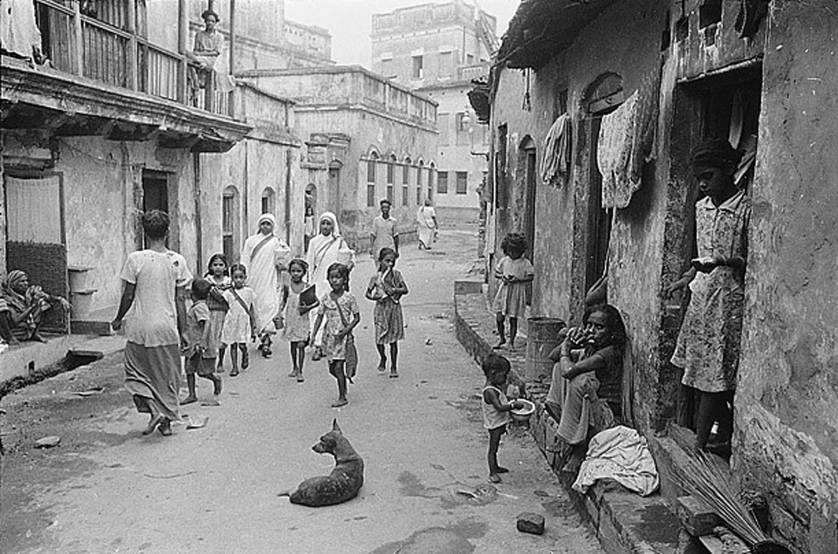 “In all her simplicity Mother was indeed an intelligent, humanly and spiritually prudent and wise person. She had a clear spiritual vision of all things and situations. She interpreted reality from a spiritual point of view and took her decisions in view of this.
“In all her simplicity Mother was indeed an intelligent, humanly and spiritually prudent and wise person. She had a clear spiritual vision of all things and situations. She interpreted reality from a spiritual point of view and took her decisions in view of this.
Her spiritual wisdom would blend beautifully with consideration for persons and their needs, as well as the protection of her Sisters. Once she related to me how at the last moment she stopped one Sister from going onto a plane whilst departing for a mission. She noticed a trait in that Sister’s face that indicated some kind of sickness in its first stages. Her sharp observation and motherly concern noticed the ailment and she immediately did something about it.
At times her actions and decisions seemed less prudent. Whilst in India, and even later on in the course of my contacts with the Sisters, I noticed the need for greater discernment in the acceptance of candidates for the Society, or in the appointment of certain superiors, or in normal administration business. At first I was shocked by the seeming imprudence of asking so much from so poorly prepared Sisters.
It was later that I learned how this seeming imprudence could be the price of poverty and the sign of total confidence in God’s providence. Yet I still wonder if in some administrative decisions Mother could not have acted more prudently, taking more serious advice.”
6. Where did her stamina come from?
Personality/character traits: fortitude and freedom
 “Mother’s strength came from her deep attachment to God and her total and unconditional dependence on his love. She had to face many difficulties and even much opposition. Yet she remained always faithful to her initial inspiration and God-given charism.
“Mother’s strength came from her deep attachment to God and her total and unconditional dependence on his love. She had to face many difficulties and even much opposition. Yet she remained always faithful to her initial inspiration and God-given charism.
This was very obvious in matters of poverty and the way she wanted it to be lived by her congregation. She recounted to me how often she would be offered grants and funds for her work. This she invariably refused invoking her wish to remain ‘as free as a bird’ and depending totally on Providence rather than on human security.
Mother Teresa’s personality traits also included being very strong in facing difficult situations, political circumstances or material hardship. This was mostly evident in the events often surrounding her founding of new houses. She would be strong in setting her conditions and in choosing the poorest of the poor as her first option.
Her strength was so evident when one could see her stamina for work. She would spend long hours talking to people, seemingly without giving in to tiredness. She would jokingly remark to me, at the beginning of the day, just before I would give my first talk in a retreat, how she would have already given one or two talks to her sisters.
Her fortitude was also clear to me in the way she put up and dealt with difficult persons. Her patience was inexhaustible and her reserve of goodness and gentleness never seemed to dry up. She seemed never to be conditioned by these needs. She was always free to serve and to give. More often than not it was her sisters, and at times myself, who would urge her to see to her own needs of eating and resting.”
7. How did she express the love she had for Jesus?
Personality/character traits: spiritually thirsty, peaceful, accepts life as it comes, committed to love (even when she stopped feeling God),
“The love of God was the fundamental reality that animated Mother in all that she was and all that she did. “Let us do something beautiful for God” was her constant motto and exhortation. “Pray for me that I will not ruin God’s work” was another constant appeal. She sought God in prayer, deep, personal and yet simple prayer. Her attitude and profound respect to the real Eucharistic Presence were a crying witness to this.
In all things Mother anchored herself in Faith. Faith in God as a loving Father. I once asked her what she experienced and how she felt during prayer. She looked up at me and simply said: “Nothing, Father! I feel nothing. But I know that He is there!” She was so thirsty for God. And yet so humble about it that she would constantly seek help to get closer to him. One day she really embarrassed me when, during one particularly intimate conversation, she asked me: “Father, teach me how to pray!”
A sense of reverence towards the Eucharist and towards the poor
Mother Teresa anchored her relationship with God in a total, absolute commitment to Jesus and most particularly to Jesus in the Eucharist. She saw the Eucharist as the focal point of this relationship and as the norm to guide all relationships.”Touch the poor as the priest touches the host during Mass”, she would tell her Sisters. The centrality of the Eucharist was so fundamental to her that she would describe the hour of daily adoration that her Sisters spend in front of the Blessed Sacrament as the ‘greatest gift that God gave to the society (the Missionaries of Charity)’.
She once told me that one reason why churches are becoming more empty and why people are no longer so much attracted to the Church was the fact that the Tabernacle was no longer placed on the main altar in many churches, but in a side chapel. For her this was akin to marginalising the presence of the Eucharistic Jesus, and therefore shifting the centrality of his presence from the life of the Church. This view may be seen as somewhat old fashioned theology, but it gives witness to what the Eucharist meant to Mother.
Our Lady – The Blessed Virgin Mary was a model and a source of refuge
Mother Teresa’s devotion to Our Lady was indescribable. Our Lady was everything: the constant loving presence, the support, refuge, point of reference, model, tender mother, source of peace and joy for her. Mother Teresa firmly believed in the force of intercession of Our Lady. Even in small things she would confide herself totally to her.
Doing God’s will
In all her considerations, decisions or reactions, Mother would always refer to God’s will. “If He wants it…”, “It is His work…” When things did not turn out the way she would have liked them to, she would very serenely see this as an indication that God wanted things to be different.
She saw things in the simplest of ways. Once she saw clearly what should be done, she would spring into action, without hesitation or any unnecessary questioning. Once, when she was in Mexico, opening a seminary for the Priest Missionaries of Charity, she wanted me to go over and be part of the staff in the seminary. She phoned me and simply asked me: ‘Father, you come. We need you here!’ That was all. It seemed in vain that I pointed out the necessity for her to address such a request through the proper channels. For her life was simple. One just decided and execute the decision without hesitation. I heard her so often talk about the decisiveness of Mary in going to visit Elizabeth her cousin ‘in haste’. What one needed to do to go and serve others, one has to do quickly and with energy.
What always struck me was the deep and inner peace with which she would accept all events, whether pleasant or unpleasant. For her “Holiness is to open one’s hands and receive what Jesus gives and giving what Jesus takes, with a smile.” This I found her actually living in so in any small and bigger issues. When expressing my sympathy to her on the occasion of her brother’s death, she just remarked that now he was with the Lord.”
8. Did you ever see any negative attitude in her?
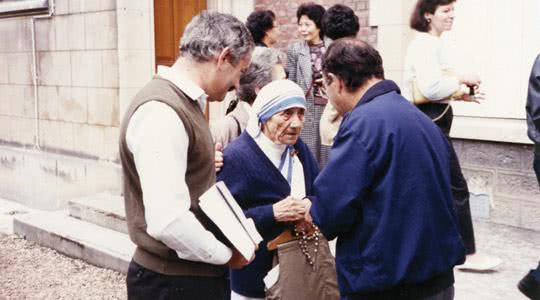 “It was only on one occasion that I witnessed Mother Teresa becoming upset and even angry. It was during a meeting with the Co-Workers governing body held in Antwerp in 1993. After a difficult and demanding meeting she asked to have a rest. Her health was already failing her and she did not seem to me the alert Mother Teresa I was used to see. She was as kind and understanding as usual, accepting explanations, reviewing decisions, etc.
“It was only on one occasion that I witnessed Mother Teresa becoming upset and even angry. It was during a meeting with the Co-Workers governing body held in Antwerp in 1993. After a difficult and demanding meeting she asked to have a rest. Her health was already failing her and she did not seem to me the alert Mother Teresa I was used to see. She was as kind and understanding as usual, accepting explanations, reviewing decisions, etc.
It was during this break that I discovered how angry and upset she became when somehow she got the impression that the Co-Workers held a further meeting behind her back, ignoring her deliberately. I don’t know how she came to this conclusion. But it was an unfair and rash conclusion, especially since she did not even give a chance to people to explain to her what in fact was taking place. This is the nearest I saw Mother come to reacting negatively when somehow left out or bypassed.
However, I attribute this reaction to her tiredness and her inability to grasp fully what was actually going on. I do not exclude also that she might have been influenced by reactions from people around her.”
9. What were Mother Teresa’s attitudes when her health started failing?
Personality/character trait: a jovial spirit in her own sickness
 “I have witnessed Mother’s exemplary attitude during sickness whilst she was in hospital in Rome, after having broken a rib in a fall. She must have been in pain, but never did she either say so or even show it. What was indeed striking was her jovial attitude towards the whole situation. She was obviously happy that some Sisters and myself had come to visit her. She wanted to speak to me. She spoke about her work and the houses and how “God was doing marvelous things with nothing”. After some time I felt awkward because I did not want Mother to get tired talking. I made several attempts to stop the conversation, but she would continue talking as if she was in the best of health. She was only eager to get back to the Sisters and to her work, in spite of what doctors were saying about her needing longer rest.
“I have witnessed Mother’s exemplary attitude during sickness whilst she was in hospital in Rome, after having broken a rib in a fall. She must have been in pain, but never did she either say so or even show it. What was indeed striking was her jovial attitude towards the whole situation. She was obviously happy that some Sisters and myself had come to visit her. She wanted to speak to me. She spoke about her work and the houses and how “God was doing marvelous things with nothing”. After some time I felt awkward because I did not want Mother to get tired talking. I made several attempts to stop the conversation, but she would continue talking as if she was in the best of health. She was only eager to get back to the Sisters and to her work, in spite of what doctors were saying about her needing longer rest.
I was not at all near her during the last years. But in 1993 I saw clear signs of her failing health and of her diminishing mental capabilities. It was obvious to me that she was finding it more difficult to keep track of things, events and even persons. She relied more and more on the support of those around her.”
10. Mother Teresa portrayed holiness as a simple task. What did holiness really mean for her?
Personality/character trait: living holiness in the little things
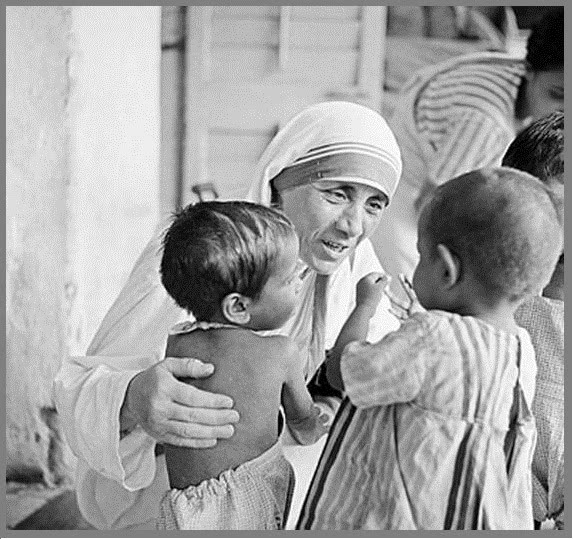 “Holiness is a simple duty for you and me,” she used to say. What struck me most in her was the fact that the exercise of her virtues was indeed a natural and harmonious expression of Mother’s very nature. They seemed to be the result of an effortless practice. They were Mother and not simply actions or qualities that she carried on her as one carries an adopted attitude after a difficult struggle. I am sure that her virtues were the end result of a life-long and strenuous struggle. But she succeeded in turning them into second nature, or rather, first nature in her. As she would say: ‘Holiness is a simple duty’. Mother Teresa did make it seem to be a simple way of life. It is precisely in this unassuming way of exercising her virtues that I could see the uncommonness of the degree to which she carried them.
“Holiness is a simple duty for you and me,” she used to say. What struck me most in her was the fact that the exercise of her virtues was indeed a natural and harmonious expression of Mother’s very nature. They seemed to be the result of an effortless practice. They were Mother and not simply actions or qualities that she carried on her as one carries an adopted attitude after a difficult struggle. I am sure that her virtues were the end result of a life-long and strenuous struggle. But she succeeded in turning them into second nature, or rather, first nature in her. As she would say: ‘Holiness is a simple duty’. Mother Teresa did make it seem to be a simple way of life. It is precisely in this unassuming way of exercising her virtues that I could see the uncommonness of the degree to which she carried them.
Mother Teresa was holy not because she was perfect. I have seen her in her radiance and in her weakness. She showed that great tenderness and beauty lie hidden in smallness and weakness.
Some criticise her unprofessional care of the sick. I worked with her in Khaligat, her Home for the Dying. When I timidly suggested that she employ a doctor, she replied that her call was to offer a loving home where people can die in dignity, not to build hospitals. She knew that institutions have a habit of taking a life of their own and how good institutions often end up in the hands of and at the service of the rich.”
11. What are your feelings about the fact that she has been canonised?
“Shining examples are not there to blind us but to enlighten us“
“The Church officially declared what the world already knows: that Mother Teresa is a Saint. It would indeed be a pity if this humble holiness is somehow tainted by the seemingly inevitable addition of the extraordinary, the mythologising of the person or the pious commercialisation of Mother. Popular canonisation has manifested itself in such things as the selling of life-size statues and images of Mother.
The official canonisation is a confirmation by the Church of the saintly qualities of a person. This is one way of reminding the people of God about the true nature of every person’s human and spiritual vocation. It is therefore a good thing that the shining light of a person’s holiness is confirmed and proposed to people as a light to be followed.
Human nature being what it is, unfortunately, tends to shift the attention from the humble, ordinary to the special, exceptional and extraordinary. It would be a pity if the canonisation process is understood as exalting a person and his/her saintliness into the realm of the superlative, extraordinary and therefore inaccessible level of those who have already “made it”.
This surely runs counter to Mother Teresa’s spirit, who kept insisting that holiness is an achievable, simple faithfulness to the call of God’s love, in the everyday, hidden and humble actions of our daily lives.
Shining examples of holiness are not there to blind us by their exceptional brightness, but to enlighten and encourage us to shine our little light with every simple step of life’s daily journey.”
Published: September 2016
Updated: March 2018
Read more:
– Mother Teresa: My Saint of Darkness and Hope
– Maria Teresa Spinelli – Her Life Story


